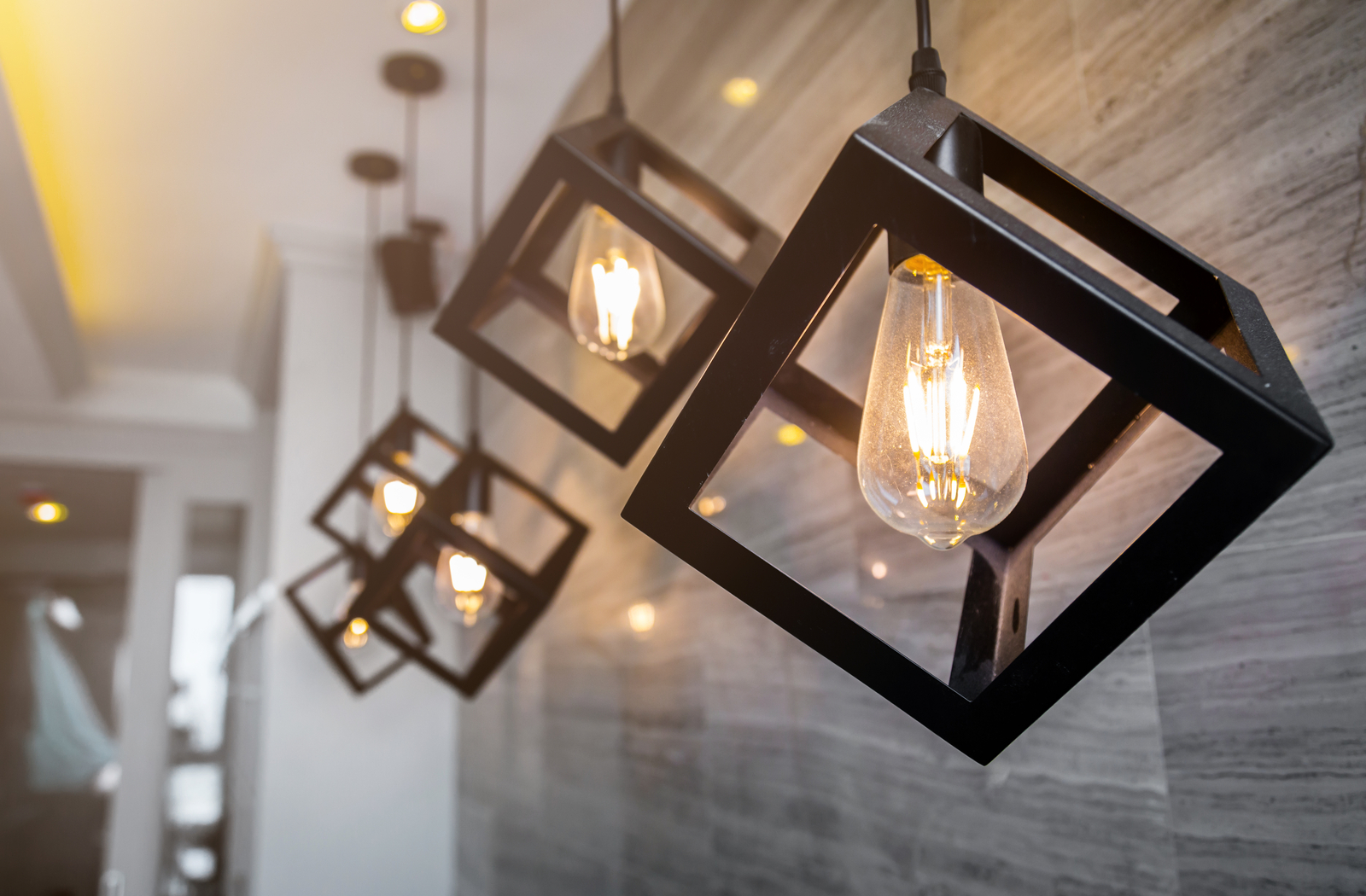
Excellent lighting has turned many a humble space into a comfortable, welcoming environment, while poor lighting can make even the most well-designed room appear unappealing. But how can you master the subtle art of lighting for your place?
Don’t worry; we’ve spent years helping customers in Okotoks and Calgary use effective lighting to create the best possible environment for every room in their home. Now we’ve compiled ten of our best lighting suggestions so that you can turn yourself into an expert on atmosphere and set the ideal tone for your next guests.
Our Top 10 Tips For Luminous Luxury
Try these suggestions to light up your home in a way that will also light up your face next time you walk into it:
Don’t Leave Lighting Until Last
Too many people make their interior design choices before thinking about how to light their space. This can result in a lot of retroactive shuffling of heavy furniture, so save yourself the effort and light the space before you decide where things should go in it.
2. Keep Up with Lighting Trends
Just like patterns and colour schemes, lighting styles come in and out of fashion as time passes. We’ll save you some frantic Googling: current trends involve the use of halogens to create warm lighting for short periods (in reading lamps and bathroom mirrors, mostly), and general lighting is often accomplished via interior design features rather than architectural lighting, which is more commonly used for accenting.
3. Compliment Existing Natural Light
People often forget that most rooms in a home have windows, which provide at least some degree of natural light. In areas with significant natural light, consider installing lighting fixtures with dimmer switches or reflective features so you can easily adjust the level of lighting to balance the natural conditions.
4. Use Dimness Strategically
Workplace lighting is usually designed to be cool and fully illuminate every part of the space. Home lighting is a different story—you likely want the place where you live to be cozy, inviting, and more intimate. So don’t be afraid of the dark; incorporate it! Leaving a few shadows in corners and lower lighting for private spaces like bedrooms will create a significantly more relaxing mood.
5. Avoid Downlights In Common Spaces
Overhead lighting can cast large shadows on the faces of people with heavy brows or other prominent facial features. That being the case, it’s best to avoid these kinds of lights in rooms designed for socializing. You want your lights to flatter your guests, not make them look like halloween monsters (unless that’s what you’re into!).
6. Bounce Light to Create Gentle Ambience
Instead of relying on downlights in social spaces, create ambient illumination by bouncing light off the ceiling. You can accomplish this with chandeliers, standing lamps, and other lights that are part of your interior design.
7. Use Lamps For Task Lighting
Trying to light a room where you do a lot of reading? Use a desk lamp. Lamps that provide limited illumination in a specific area can help make common household tasks and everyday activities easier without clashing with the ambience you’ve worked so hard to create elsewhere.
8. Use Accent Lights to Highlight Design Features
Building a few lights into the architecture of your space is an excellent way to show off how well-designed it is. Cove and valence lighting can both be highly effective ways of underscoring the angles in a living room while minimizing shadows and glare.
9. Account For Heat & Brightness When Lighting Art
Remember that lighting affects the way we perceive different colours. Cool lighting will mute the warmer tones in a work of art, whereas overly hot lighting will affect the depth and impact of gentle greens, blues, and other subtle pigments. Placing a bright light source next to a painting with a glazed surface can also create too much glare to see it clearly, so opt for neutral lighting with mild to moderate intensity for best results.
10. Know Your Limits Lumens
Lumens are a measurement of how much light a given bulb produces. This makes it easier to select appropriate lighting for different tasks and areas. Generally speaking, you’ll want 1,500 to 3,000 lumens for ambient lighting in living rooms and parlours, whereas 400 lumens should be the maximum for task lights such as reading lamps.
Experiment With Your Space
Finding the right balance of lighting for any given home will take some trial and error, because each room has its own unique quirks and features. Use what you’ve learned above to start playing with the lighting in your space, and contact an experienced electrical contractor if you have questions about trying to install a new lighting fixture in your home.


